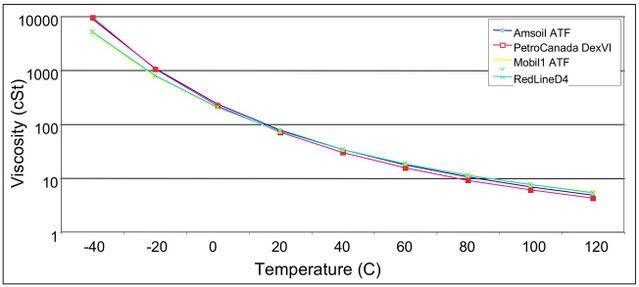Recently I posted the viscosity of PetroCanada DexVI and Amsoil ATF over a range of temperatures. I did the same calculations today with Mobil1 Synthetic ATF which is a DexIII fluid approved for the "H specification". I was pleasantly surprized to see that this DexIII fluid is actually less viscous at low temps than the DexVI approved fluid. All temps are degrees C. All viscosity units are cSt.
Code:
temp amsoil ATF petrocanada Mobil1 Synthetic ATF
-40 8820 9535 4708
-20 1074 1052 762
0 237 220 200
20 77 70.2 73.6
40 33.5 29.8 34
60 17.4 15.4 18.5
80 10.4 9.1 11.4
100 6.8 6 7.6
120 4.8 4.24 5.44
Code:
temp amsoil ATF petrocanada Mobil1 Synthetic ATF
-40 8820 9535 4708
-20 1074 1052 762
0 237 220 200
20 77 70.2 73.6
40 33.5 29.8 34
60 17.4 15.4 18.5
80 10.4 9.1 11.4
100 6.8 6 7.6
120 4.8 4.24 5.44


